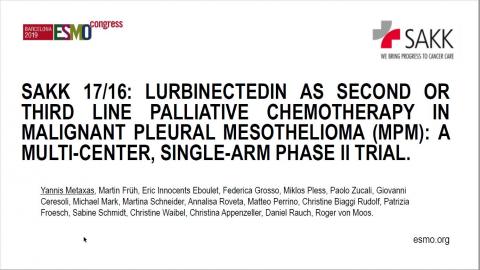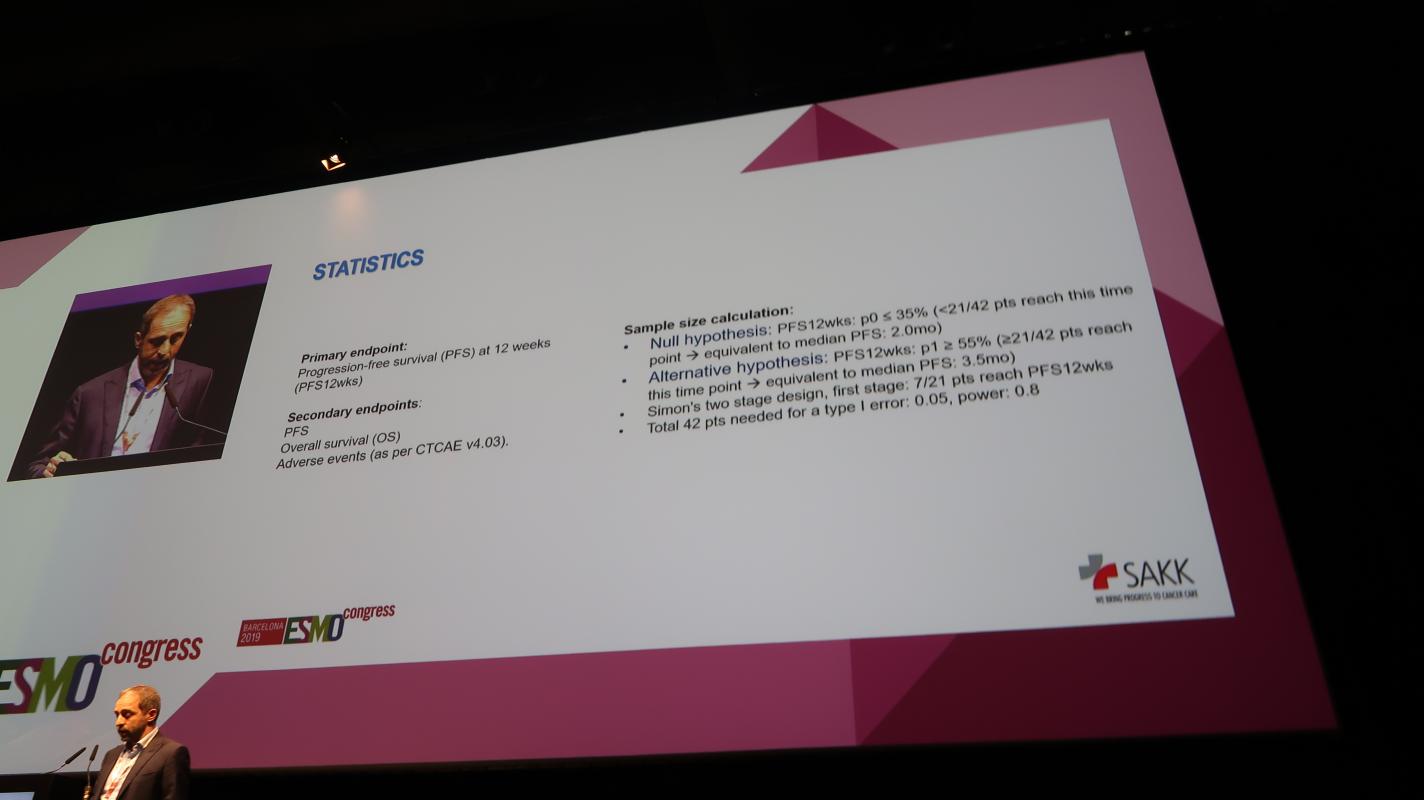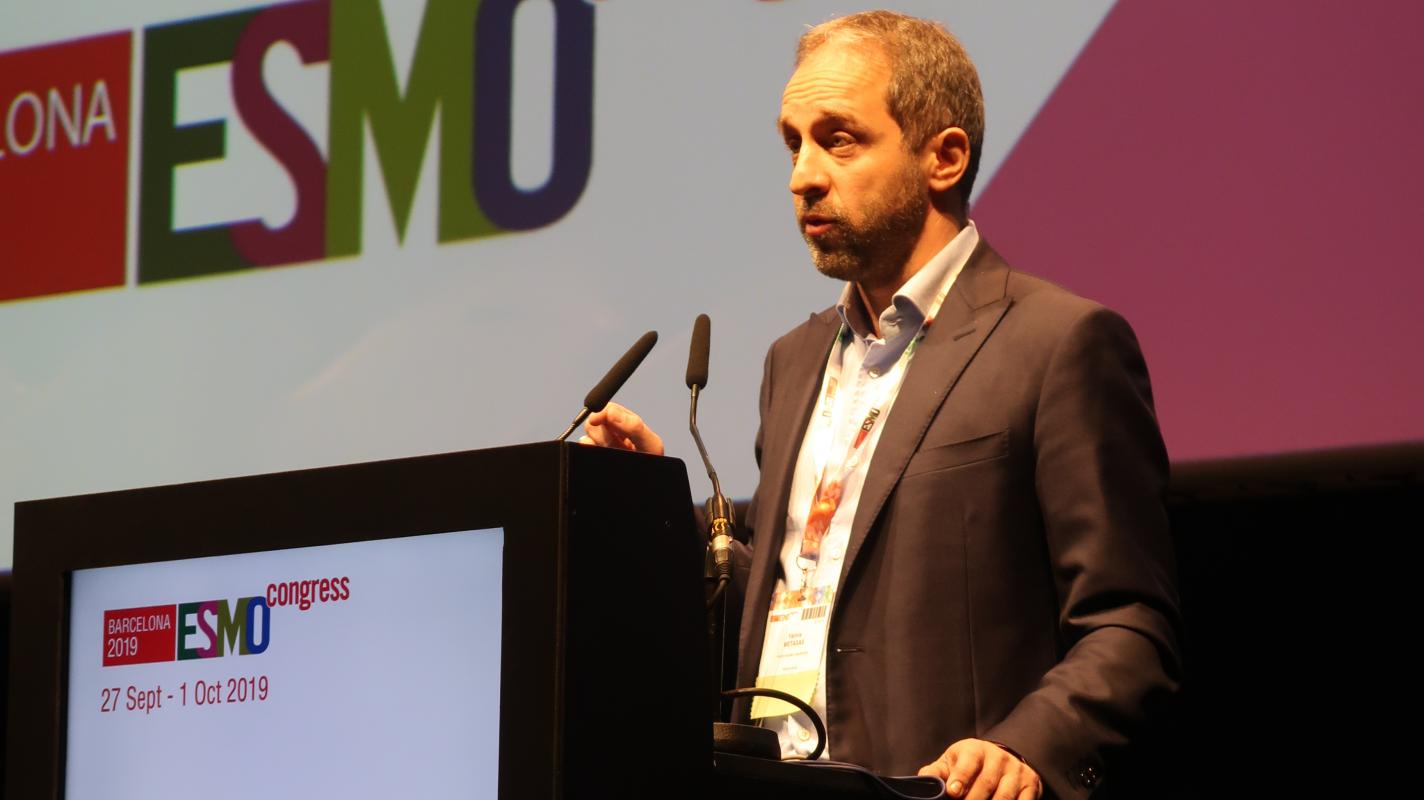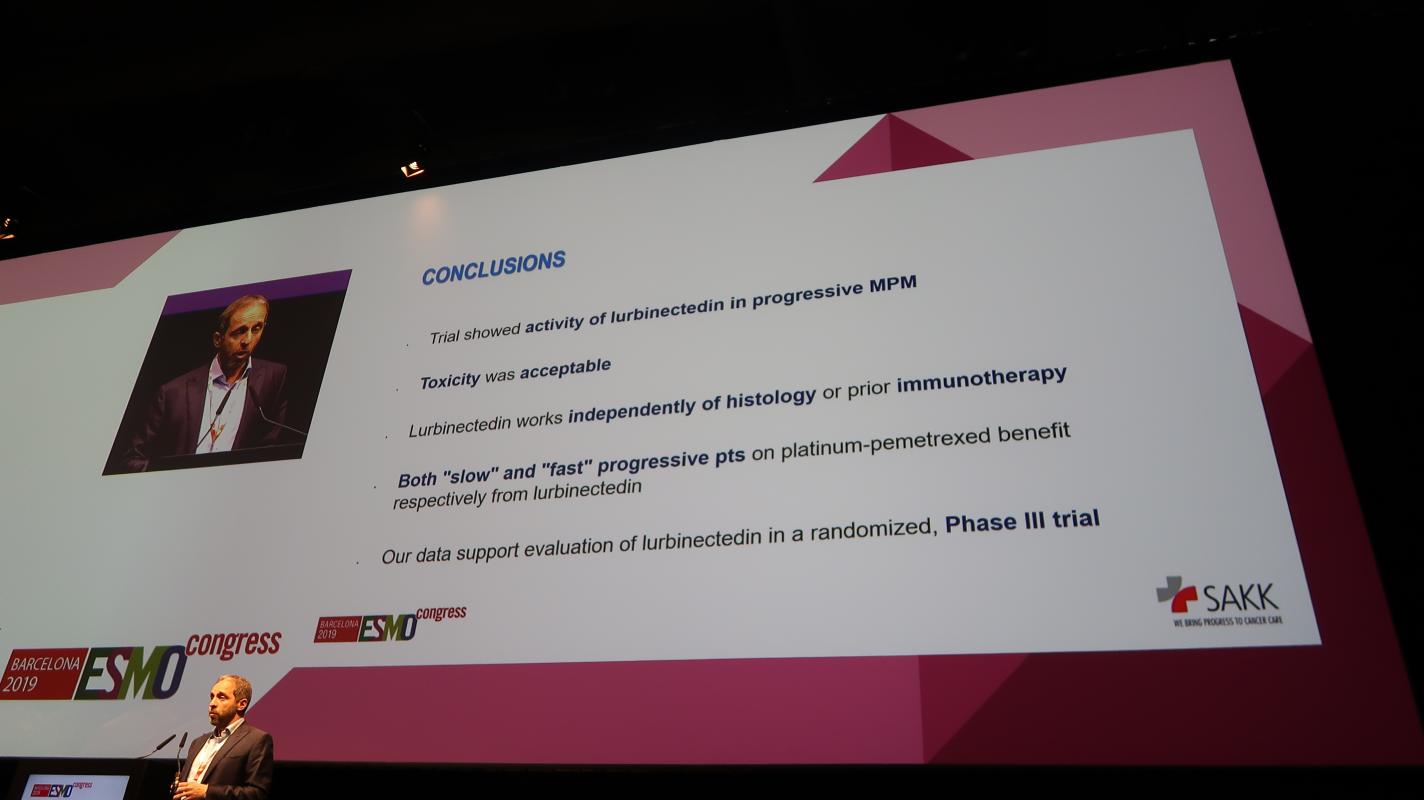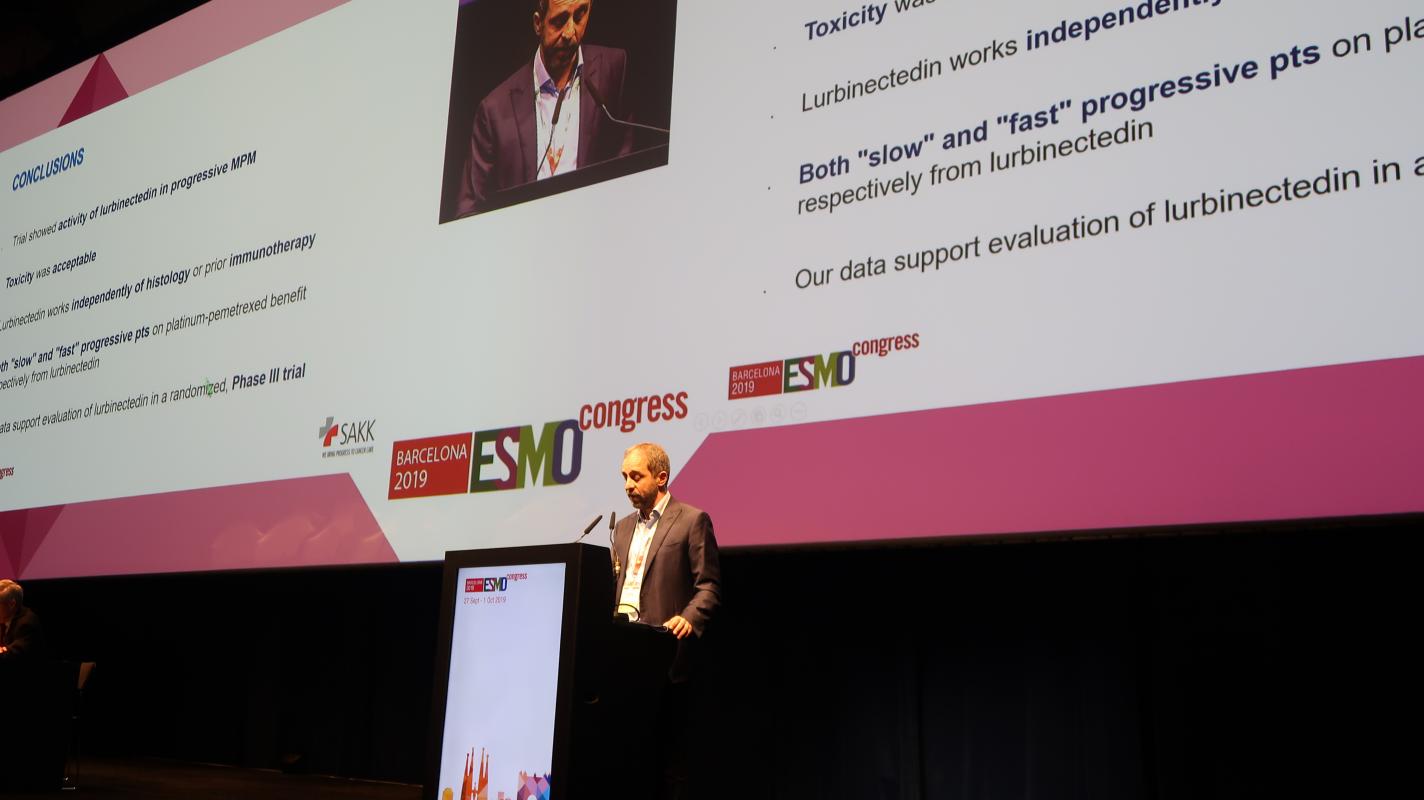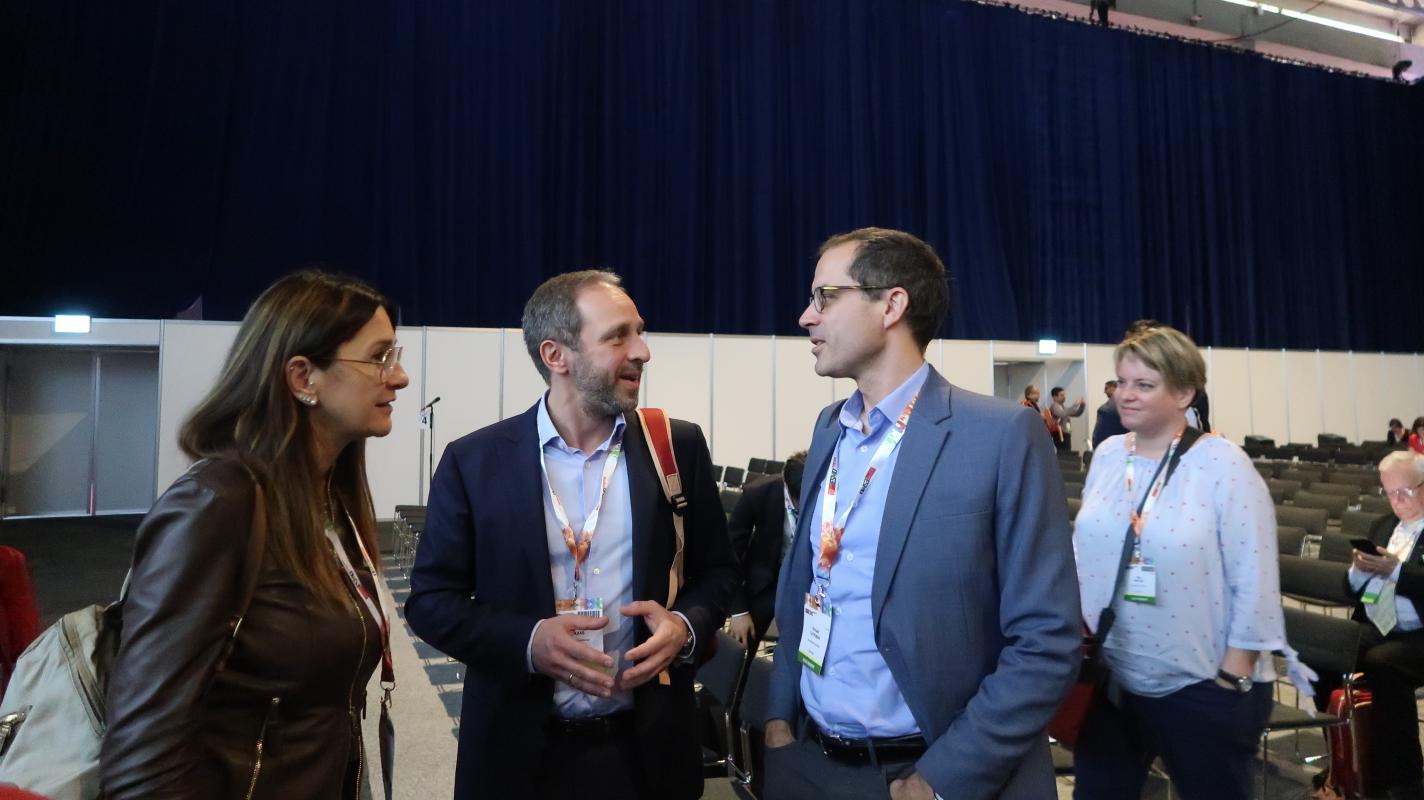Proffered Paper Session at ESMO 2019 Congress: SAKK 17/16
SAKK presented the results of the Phase II trial of lurbinectedin as a single agent in the treatment of progressive MPM, in an oral session. The oral presentation took place during the European Society of Medical Oncology (ESMO) Congress, which is being held from September 27th to October 1st in Barcelona.
The oral presentation, entitled "SAKK 17/16: Lurbinectedin as second or third line palliative chemotherapy in malignant pleural mesothelioma (MPM): A multi-center, single-arm Phase II trial", has shown results of the international trial, which enrolled 42 patients with progressive MPM achieving its primary endpoint of Progression Free Survival (PFS) at 12 weeks in 52.4% of patients.
There is currently no standard second-line treatment for MPM. Therefore, there is a high unmet medical need for novel treatments in progressive MPM. According to Dr. Metaxas, coordinating investigator of this trial: "These results demonstrate that lurbinectedin might be active in progressive MPM and seems to work independently of histology or after prior treatment with immunotherapy. Both patients with a slow or fast disease progression on prior first-line platinum-pemetrexed chemotherapy could benefit from this treatment.”
Malignant mesothelioma is a tumor that originates from the mesothelial cells of the pleural, peritoneal or pericardial lining, and is often associated with exposure to asbestos, usually with a very poor prognosis at the time of diagnosis, the pleural mesothelioma being the most frequent location. The goal of current cancer treatments (surgery, radiation therapy, and chemotherapy) is to reduce or eliminate symptoms, as well as to prolong progression-free survival (PFS) and/or overall survival (OS). It is estimated that the incidence of this type of cancer may increase in the coming years due to the long latency period between exposure to asbestos and the appearance of the tumor.
